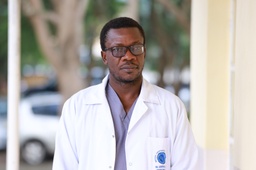All Courses
SIGN Technique
Explore the SIGN Technique for the Standard Nail. Plus tips for reaming and nail insertion and rotation.
21 steps
Instructions for Use
Review these instructional documents to get the most from new SIGN Products.
4 hours 29 minutes
20 steps
Distal Femur
Fractures that occur where the canal widens or 5 cm proximally are ideal indications for retrograde approach to femur. We are seeing more and more fractures more proximal in the isthmus being treated with retrograde approach to femur. We also see the Fin Nail used frequently to stabilize these fractures.
3 steps
Tibia
Plating of the fibula leads to early stability, but may also lead to nonunion of the tibia fracture. Plating the fibula may distract bone healing in the tibia because the fibula often heals quicker.
3 steps
Humerus
There is a difference of opinion between those who favor plate fixation and nail fixation for humerus fractures.
3 steps
Pediatric Fractures
The number of adolescent femur fractures in developing countries is increasing rapidly. The SIGN program managers asked us to design a method to stabilize these fractures. We have designed a trochanteric entry semi rigid nail using our fin concept for distal interlocking. This nail has provided excellent stabilization during bench testing and reports sent to our SIGN surgical database.
4 steps
SIGN Hip Construct (SHC) System
The general medical conditions of the patient must be evaluated and the patient deemed healthy enough for surgery. The patient must have no infected areas or injuries that preclude surgery. Patient should be told about risks, benefits of surgery, and agree to insertion of the SHC.
17 steps
Retrocalcaneal Fusion
The SIGN IM Nail Retrocalcaneal Fusion technique has been developed in response to requests for this procedure and patient need in developing countries. The system is designed for use with or without C-arm image intensification.
0 steps
Pelvic and Acetabular Fractures
Pelvic fractures are markers of high energy trauma and are associated with significant morbidity and mortality.
1 hour
20 steps
Deformity Correction
The goal of treatment or correction is to achieve a well functioning leg with normal alignment and stability and normal range of motion of joints.
3 steps
Flaps
Microscope is to soft tissue reconstruction what fluoroscopy is to orthopedic fixation. There are more options for soft tissue reconstruction if microsurgery available, but there are plenty of non-micro options.
3 steps
Nonunions
If the patient does not heal well, we must consider the fracture that goes to delayed union, nonunion, and understand when to intervene.
5 steps
Bone Graft System
The SIGN Bone Graft System instruments include: hand reamers, bone scoops, flute scrapers, and reamer sharpeners.
6 steps
SIGN Trauma Sessions
Watch SIGN Trauma Sessions webinars from anywhere around the globe.
8 hours 23 minutes
22 steps
Meet The Heros Who Transformed Their Company!
Go meet them

